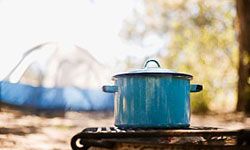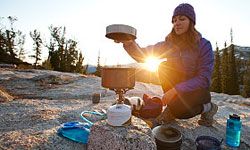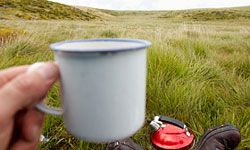When you're camping, eating is pretty paramount. For one thing, hiking around with (or even without) a 35-pound (15-kilogram) pack on your back will make you work up an appetite for something more filling than raisins. For another, there isn't a whole lot to do in the forest once the sun starts to slip behind the trees. So, you might as well use that last bit of daylight to cook something warm and delicious to eat around the campfire. Thank goodness there's a lot of great cooking gear out there to make being a camp chef an entertaining culinary experiment.
As with most camping equipment, cooking tools come in a variety of shapes, sizes and prices. Outdoor stores and online retailers offer dozens of stoves, pots, cutlery pieces, dishes and cleaning supplies designed to meet a variety of needs. What gear you choose will depend on certain factors -- like the types of meals you'll be cooking and the size of the group you'll be feeding. And then there's the biggest determining factor -- whether you'll be car camping or backpacking. Experts recommend that hikers carry no more than 15 to 25 percent of their total body mass on their backs, so every ounce you can shave from the weight of your cooking tools will help you meet that goal (and reduce the agony you'll experience on an uphill climb) [source: Curtis].
Advertisement


